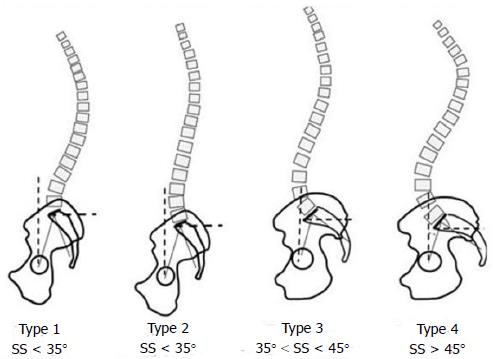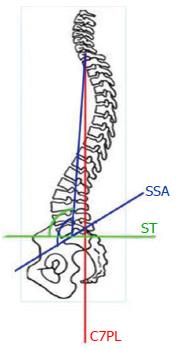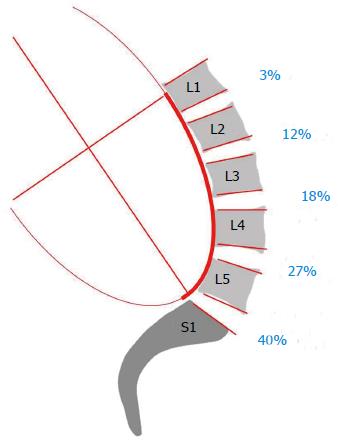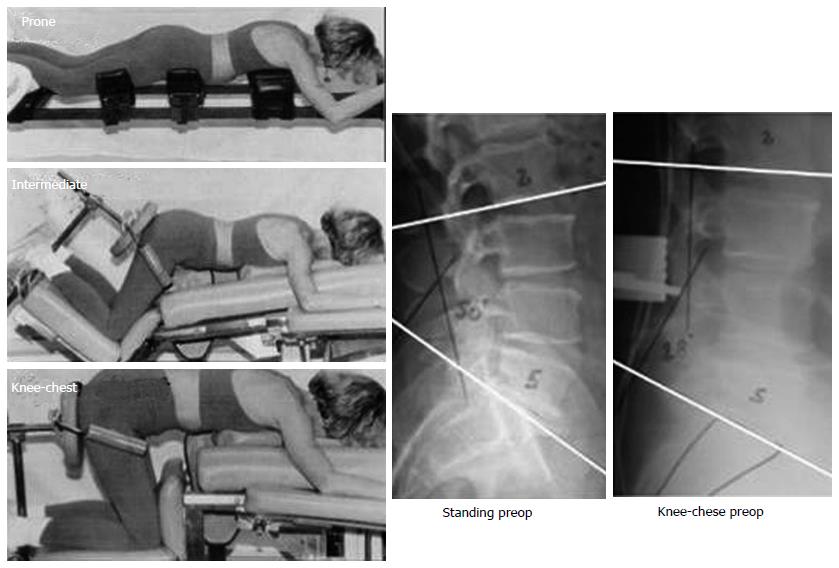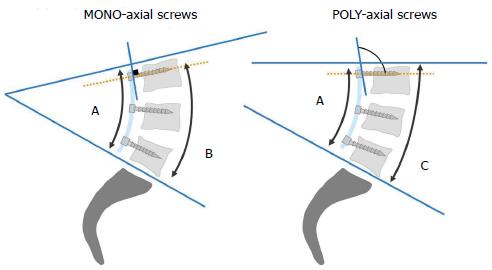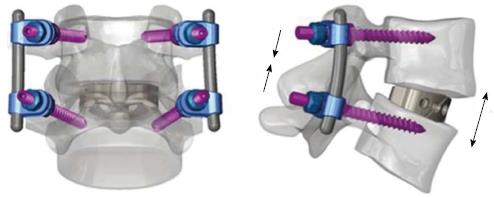Copyright
©The Author(s) 2015.
World J Orthop. Jan 18, 2015; 6(1): 117-126
Published online Jan 18, 2015. doi: 10.5312/wjo.v6.i1.117
Published online Jan 18, 2015. doi: 10.5312/wjo.v6.i1.117
Figure 1 Hypolordotic lumbo-sacral fusion with hyperextension of the segment above the instrumentation.
Failure to restore a good sagittal balance leads to chronic back pain and early degenerative changes at adjacent level(s).
Figure 2 Duval-Beaupère’s pelvic parameters.
Sacral slope (SS), pelvic tilt (PT), pelvic incidence (PI) and mathematical relation between the parameters (PI = SS + PT).
Figure 3 Low pelvic incidence is usually associated with slight sacral slope and flat lumbar spine, and high pelvic incidence with great sacral slope and more curved lumbar spine[32].
PI: Pelvis incidence; PT: Pelvis tilt.
Figure 4 View of several spinal parameters.
Lumbar lordosis (LL), Thoracic kyphosis (TK), Apex of the lordosis, Inflection point. PI: Pelvis incidence; PT: Pelvis tilt; SS: Sacral slope.
Figure 5 Roussouly’s classification of sagittal profiles of the spine in four types[33].
Figure 6 C7 plumb line, spino sacral angle and spinal tilt.
C7PL: C7 Plumb Line; SSA: Spino sacral angle; ST: Spinal tilt.
Figure 7 Sagittal lumbar curvature modeled by a portion of an ellipse.
Note that 2/3 of the lumbar lordosis is located in the lower lumbar spine between L4 and S1 and that 85% of the lordosis is given by the L3-S1 segment.
Figure 8 Different positions on operative table (Figures on the left coming from the work by Stephens et al[37].
Clinical case on the right: Loss of lumbar lordosis in knee-chest position with L2-S1 angle passing from 50° preoperatvely to 28° peroperatively).
Figure 9 The importance of rod contouring depends on the spino-pelvic morphotype.
PI: Pelvic incidence.
Figure 10 Impact of rod-screw connection on lordosis restoration: monoaxial vs polyaxial screws.
With mono-axial screws, the connection between the screw and the rod is perpendicular, permitting therefore to position the spine approximately in a similar position compared to the rod. On the contrary, using poly-axial screws, the connection between the screw and the rod is angulated with the spine less lordotic compared to the rod. In the figure, although the contouring of the rod is similar for the two spines, the spine on the right, instrumented with poly-axial screws, is significantly less lordotic.
Figure 11 Posterior and lateral view of combined anterior/posterior arthrodesis using anterior lumbar interbody fusion cage inserted anteriorly and posterior pedicle-screw stabilization[55].
- Citation: Barrey C, Darnis A. Current strategies for the restoration of adequate lordosis during lumbar fusion. World J Orthop 2015; 6(1): 117-126
- URL: https://www.wjgnet.com/2218-5836/full/v6/i1/117.htm
- DOI: https://dx.doi.org/10.5312/wjo.v6.i1.117













